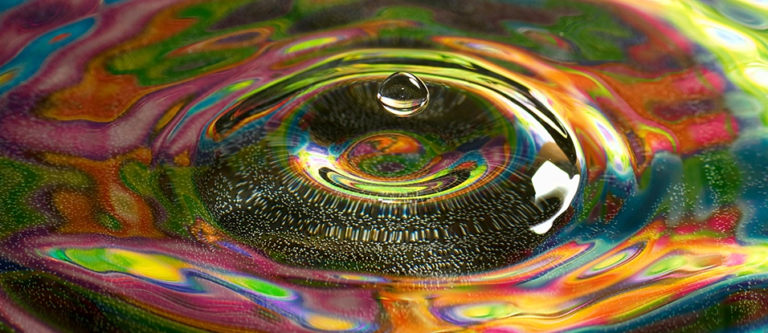Light Interfering with Its Own Past: Famous Physics Experiment Gets a New Twist
In the year 1801, a renowned British scientist named Thomas Young conducted an experiment involving two slits, which has become an important part of physics history. By illuminating light through two slits in a material, he demonstrated that light exhibited wave-like properties, following multiple paths concurrently and then causing interference in an expected manner upon recombination.
Since that groundbreaking moment, scientists have replicated the experiment to demonstrate that electromagnetic radiation exhibits both wave-like and particle-like behaviors. In other words, light can behave like rolling marbles on a slope and ripples in a pond, depending on the method of measurement.

This phenomenon isn’t limited to photons alone. Similar experimental setups have been used to demonstrate the wave-particle duality of electrons, neutrons, and entire atoms, thus establishing one of the fundamental principles of quantum mechanics based on probability.
Recently, scientists have given a contemporary twist to Young’s experiment by creating ‘time slits’ through swift adjustments in a material’s reflectivity. This novel approach allowed them to investigate the capability of a light wave to interfere with its own past and future.
According to physicist Riccardo Sapienza from Imperial College London in the UK, “Our experiment provides further insight into the fundamental characteristics of light and serves as a building block towards the development of materials that can precisely manipulate light in both spatial and temporal domains.”
To conduct their study, Sapienza and his team employed a thin film of indium tin oxide, a substance commonly found in smartphone displays. They manipulated its reflectivity through laser pulses, resulting in two separate periods during which the light could be detected as it hit the material. This created distinct temporal pathways in which a single light wave could interfere with itself.
Due to these temporal differences, the frequency of the light altered upon hitting the material, resulting in the emergence of unique colors resulting from the interference between different waves, rather than variations in brightness. By analyzing this interference pattern, the researchers were able to draw conclusions about the wave-like nature of light.

According to physicist John Pendry from Imperial College London, “The experiment involving dual time slits paves the way for a novel type of spectroscopy capable of accurately determining the temporal composition of a light pulse.”
The researchers were surprised to discover that the slits opened much more rapidly than they had anticipated, with the process taking place within 1 to 10 femtoseconds (equivalent to a quadrillionth of a second). This finding suggests that the current theoretical models may require revision, as materials do not necessarily respond to light in the manner previously assumed, particularly in terms of changes in intensity or speed.
The ability to manipulate the interaction between light and materials on such minuscule timescales is immensely valuable for both technological advancements and the exploration of quantum physics mysteries. Additionally, it holds great potential for the study of cosmic phenomena, such as black holes, on a larger scale.
The team plans to extend their ‘time twist’ experiment to another material, the atomic crystal, where atoms exist in a fixed pattern. This could potentially result in rapid progress in the field of electronics.
According to physicist Stefan Maier from Imperial College London, “The idea of time crystals holds the promise of developing optical switches that are ultrafast and can operate in parallel.”
The research has been published in Nature Physics.
Do not forget to share your opinion with us to provide you with the best posts !




0 Comments